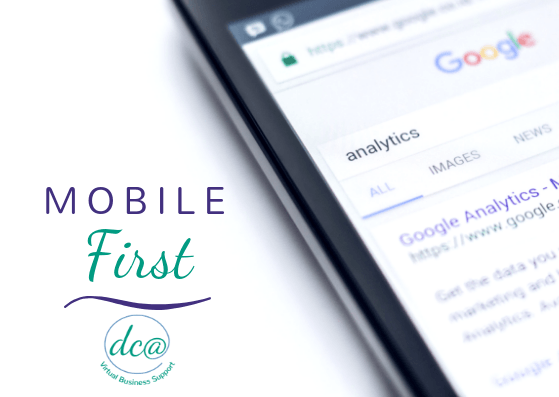
Mobile First
Up until recently your mobile website was considered an alternate or secondary site. That no longer rings true. Google – you know the big company that owns the world’s largest search engine – is now indexing your mobile website before your main website. This effectively makes your mobile site your main site now. Have I confused you yet?
But what does this mean?
Other changes that Google has made to the way it indexes websites has led up to this. In 2015, sites that did not have a mobile-friendly version were downgraded in the indexing algorithm. Mid-2018, we saw that sites without an SSL were also being downgraded. Slightly before that and much more quietly, mobile load speed was added into the formula. Each year Google updates their algorithm. We’ve seen major, confirmed updates such as Penguin and Panda. And then there is Fred – an unconfirmed seemingly major update. If you’d like to see all the changes that Google’s algorithm has gone through, check out one of my favorite sources Moz Google Algorithm Change.
I still don’t know what that means?
Sorry, I didn’t mean to be so Stephen King-esque. I was building up to the main point.
Bottom line: if you don’t have a fast loading, responsive mobile site, you may be hurting how your website organically shows up in search queries. For a small business owner who has worked hard to gain reviews, relevant back links, blogged to introduce new keywords, and all the other things we do to optimize our sites, your SEO toilet just flushed.
The fix is sometimes easy. If you have an old website, the fix might be to rebuild your website. Sorry that one wasn’t easy. You can first explore to see if your current template offers an updated responsive one. Use caution however as updating a template that has had several iterations since the publish date can severely impact appearance and performance.
Here are a few things you can do on your own to help:
- WordPress offers image optimizing plugins. Some are free, but they limit space. The paid versions are fairly inexpensive and worth the purchase.
- Resize your images before you upload them to your site. If you need to fill a thumbnail space, you don’t need a 5 mb image. Use a tool like paint to resize it to about 200 x 200 px. Check the spaces you are filling to see what size image is really needed.
- Delete images from your image library that you aren’t using. If you have several years of blogs, you may want to skip this step so you don’t delete anything that is buried 3 years deep. You could however delete old team member photos.
- Check your website on your mobile phone. Have your friend or partner check it on their phone. The idea is to confirm that your site functions on different phones/software.
- Don’t use flash on your site. Neither Android or iOS support it.
Would you like to chat about anything in this article? Schedule a call with me. Oh, and Happy 2019!
